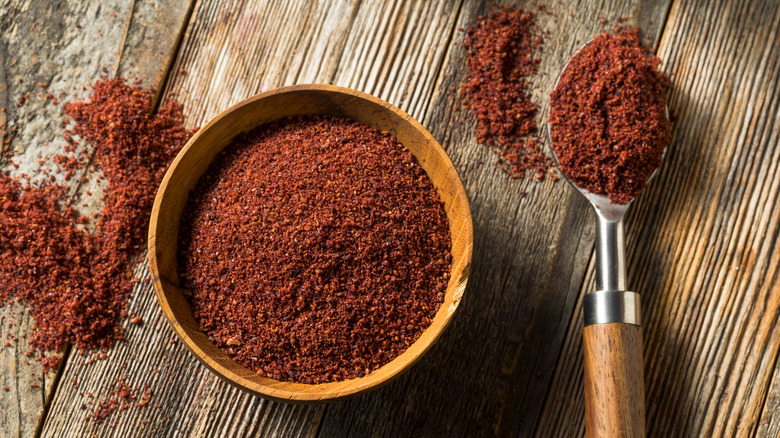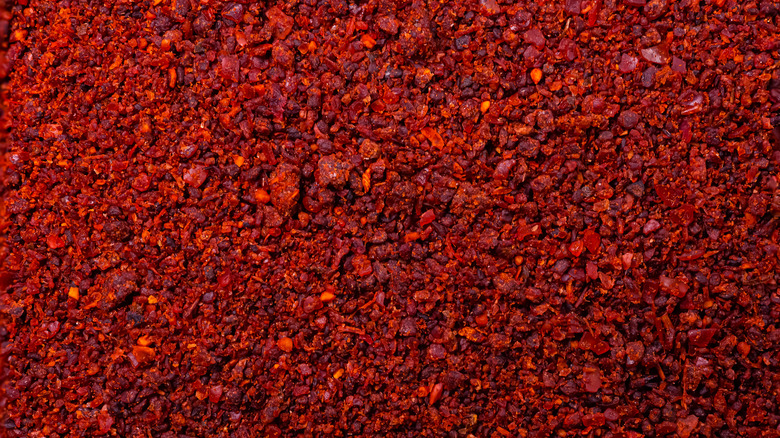Ground Sumac Is The Tangy Spice Your Salad Dressing Needs
The primary goal of eating is to fuel your body. However, it's also important to choose food that tastes good. Otherwise, you might not eat as much as you should. When COVID-19 hit, doctors noticed that the loss of taste created a disinterest in food that led to unhealthy weight loss in some individuals. To get the nutrition you need while making eating a satisfying experience, it is important to prepare your food so it tastes great. Often, this feat is remarkably simple to accomplish. Just adding a dash of the right spice is all it takes.
Sumac is a deep red spice that is made by grinding up dried sumac berries. While it is frequently used in Middle Eastern fare, and it is a go-to spice for food expert Padma Lakshmi, sumac hasn't fully been embraced by Americans yet. However, the citrusy tartness of this spice can add a flavorful focal point to your salad dressing, taking it to a whole new level.
How to use sumac as a flavor enhancement for your favorite foods
If you look up any recipe that calls for sumac, you immediately notice that this spice is usually added either very late in the cooking process or after the cooking is finished. This is because sumac doesn't need to be heated to get the best flavor. You may even lose some of that marvelous zest when cooking, especially with dry heat. Another reason to wait till the end to add sumac is that its vibrant color looks magnificent sprinkled on top of your dishes.
The tart citrus elements of sumac make it a great addition to salad dressing. You can experience its full flavor just by adding a little to the mix. The tiny bursts of tongue-tingling that you get from sumac can elevate the flavor. Beyond salad dressing, sumac is an excellent addition to yogurt, marmalade, hummus, chicken, snapper, cod, and more. If you want to splash a little exotic flare to your fare, all it takes is a pinch or two of sumac.

